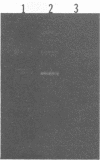Abstract
Maintenance of plasmids pBR322 and pUC8 in Escherichia coli that was nonculturable after exposure to seawater was studied. E. coli JM83 and JM101, which contained plasmids pBR322 and pUC8, respectively, were placed in sterile artificial seawater for 21 days. Culturability was determined by plating on both nonselective and selective agar, and plasmid maintenance was monitored by direct isolation of plasmid nucleic acid from bacteria collected on Sterivex filters. E. coli JM83 became nonculturable after incubation for 6 days in seawater yet maintained plasmid pBR322 for the entire period of the study, i.e., 21 days. E. coli JM101 was nonculturable after incubation in seawater for 21 days and also maintained plasmid pUC8 throughout the duration of the microcosm experiment. Direct counts of bacterial cells did not change significantly during exposure to seawater, even though plate counts yielded no viable (i.e., platable) cells. We concluded that E. coli cells are capable of maintaining high-copy-number plasmids, even when no longer culturable, after exposure to the estuarine or marine environment.
Full text
PDF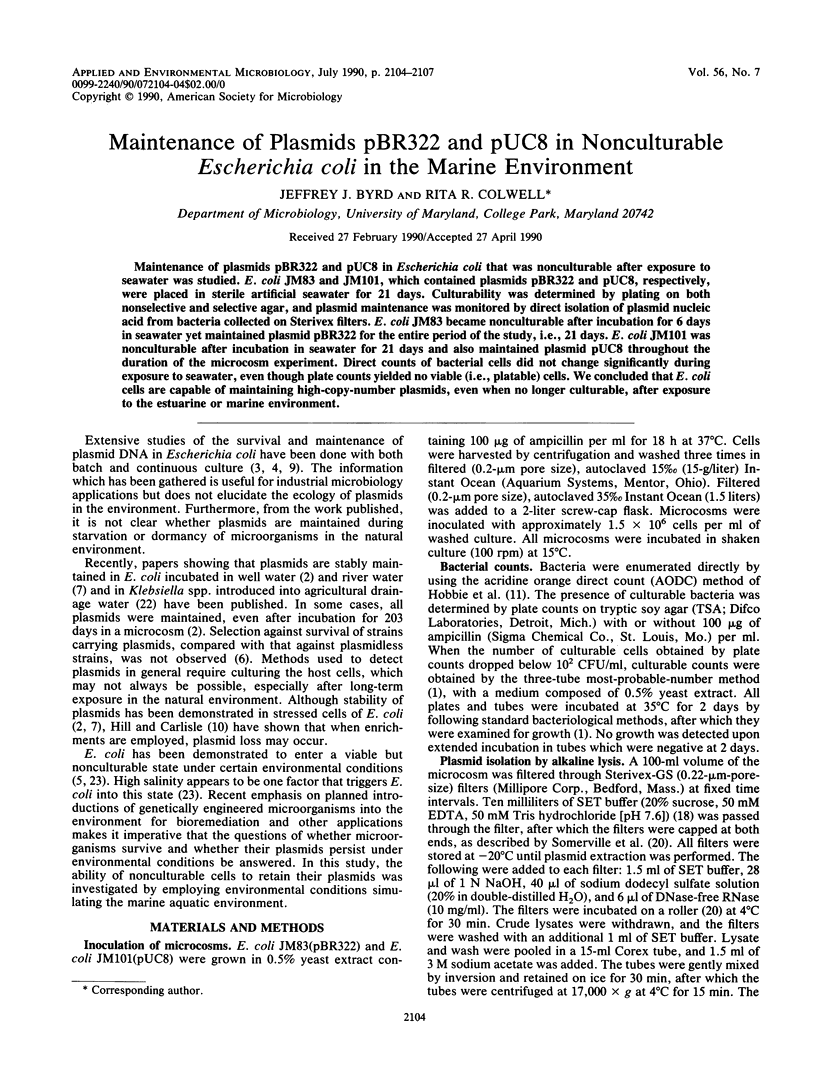
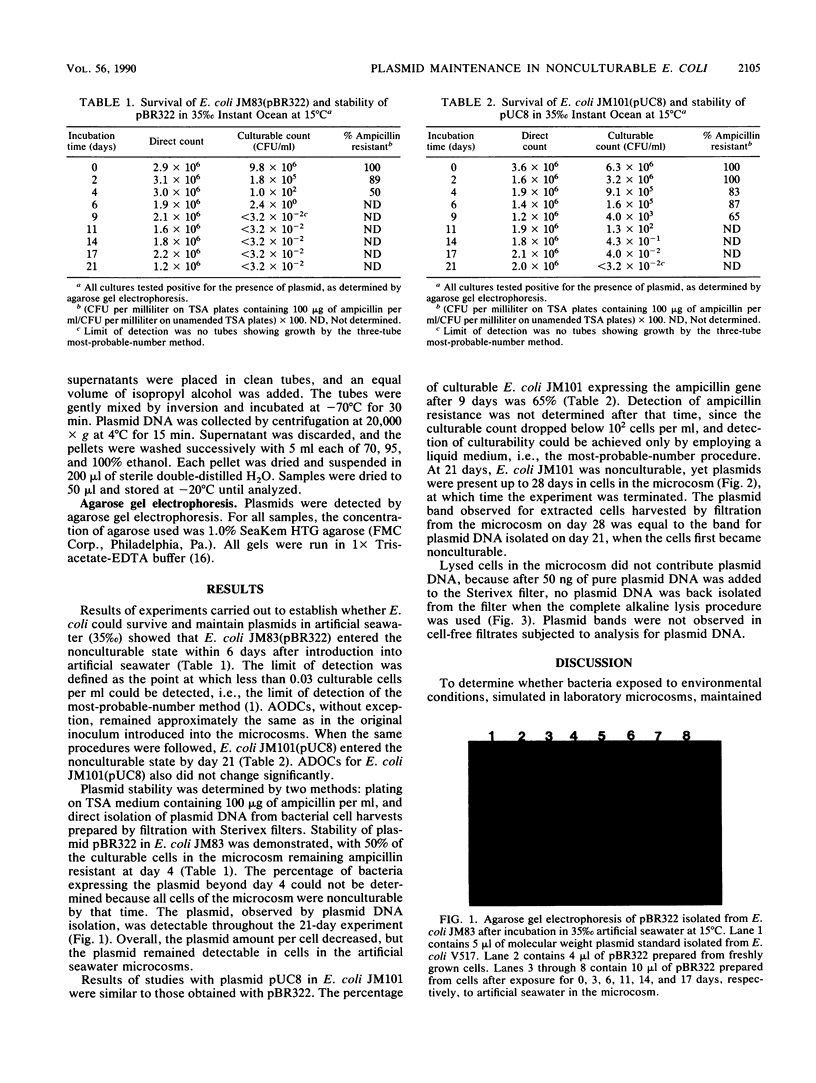
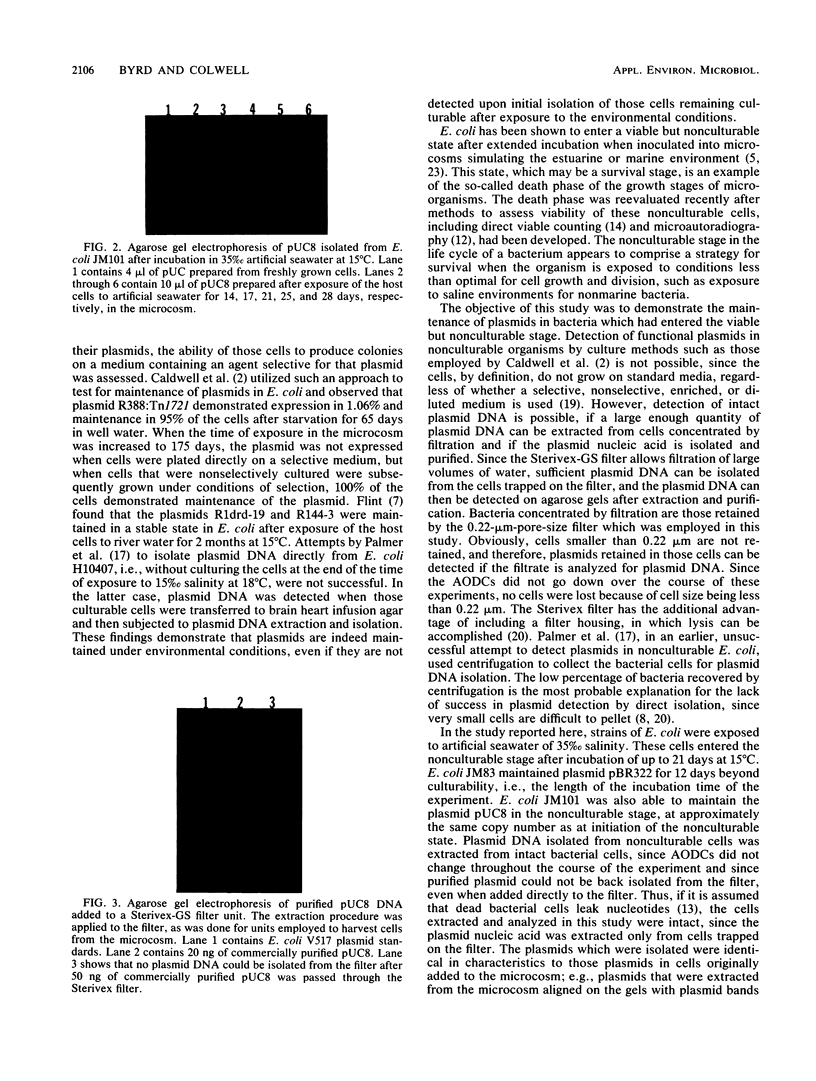
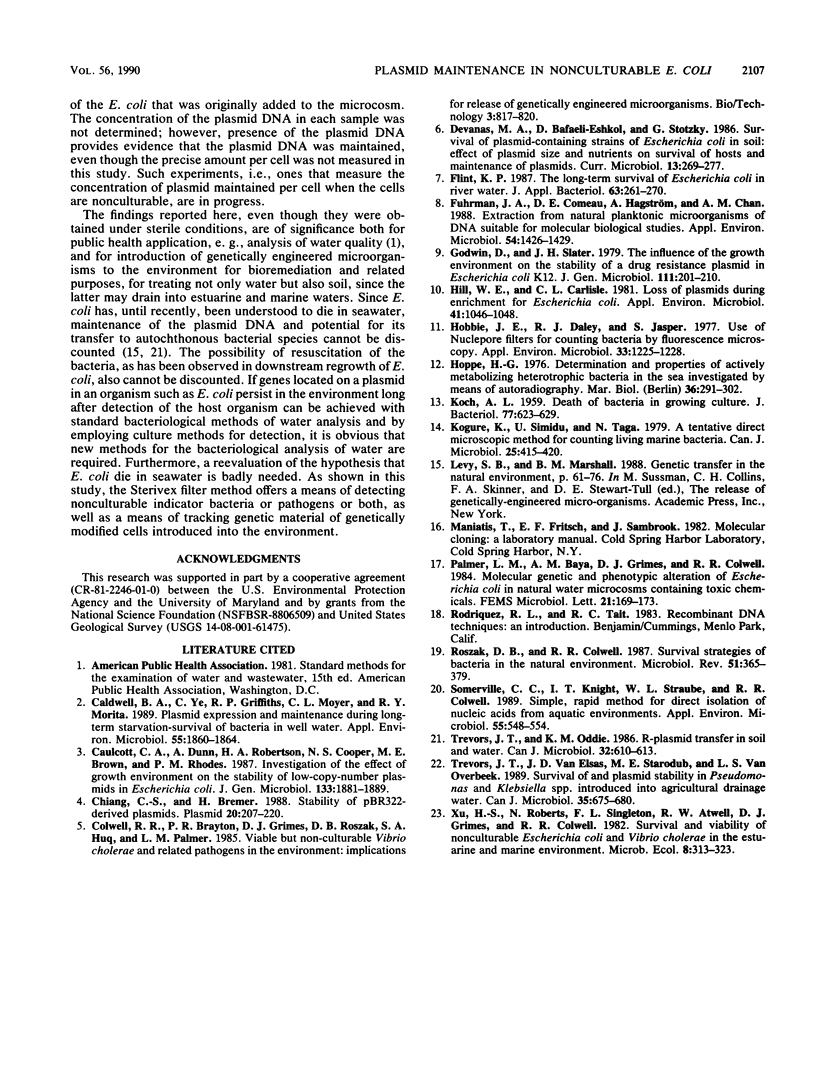
Images in this article
Selected References
These references are in PubMed. This may not be the complete list of references from this article.
- Caldwell B. A., Ye C., Griffiths R. P., Moyer C. L., Morita R. Y. Plasmid expression and maintenance during long-term starvation-survival of bacteria in well water. Appl Environ Microbiol. 1989 Aug;55(8):1860–1864. doi: 10.1128/aem.55.8.1860-1864.1989. [DOI] [PMC free article] [PubMed] [Google Scholar]
- Caulcott C. A., Dunn A., Robertson H. A., Cooper N. S., Brown M. E., Rhodes P. M. Investigation of the effect of growth environment on the stability of low-copy-number plasmids in Escherichia coli. J Gen Microbiol. 1987 Jul;133(7):1881–1889. doi: 10.1099/00221287-133-7-1881. [DOI] [PubMed] [Google Scholar]
- Chiang C. S., Bremer H. Stability of pBR322-derived plasmids. Plasmid. 1988 Nov;20(3):207–220. doi: 10.1016/0147-619x(88)90027-3. [DOI] [PubMed] [Google Scholar]
- Flint K. P. The long-term survival of Escherichia coli in river water. J Appl Bacteriol. 1987 Sep;63(3):261–270. doi: 10.1111/j.1365-2672.1987.tb04945.x. [DOI] [PubMed] [Google Scholar]
- Fuhrman J. A., Comeau D. E., Hagström A., Chan A. M. Extraction from natural planktonic microorganisms of DNA suitable for molecular biological studies. Appl Environ Microbiol. 1988 Jun;54(6):1426–1429. doi: 10.1128/aem.54.6.1426-1429.1988. [DOI] [PMC free article] [PubMed] [Google Scholar]
- Godwin D., Slater J. H. The influence of the growth environment on the stability of a drug resistance plasmid in Escherichia coli K12. J Gen Microbiol. 1979 Mar;111(1):201–210. doi: 10.1099/00221287-111-1-201. [DOI] [PubMed] [Google Scholar]
- Hill W. E., Carlisle C. L. Loss of plasmids during enrichment for Escherichia coli. Appl Environ Microbiol. 1981 Apr;41(4):1046–1048. doi: 10.1128/aem.41.4.1046-1048.1981. [DOI] [PMC free article] [PubMed] [Google Scholar]
- Hobbie J. E., Daley R. J., Jasper S. Use of nuclepore filters for counting bacteria by fluorescence microscopy. Appl Environ Microbiol. 1977 May;33(5):1225–1228. doi: 10.1128/aem.33.5.1225-1228.1977. [DOI] [PMC free article] [PubMed] [Google Scholar]
- KOCH A. L. Death of bacteria in growing culture. J Bacteriol. 1959 May;77(5):623–629. doi: 10.1128/jb.77.5.623-629.1959. [DOI] [PMC free article] [PubMed] [Google Scholar]
- Kogure K., Simidu U., Taga N. A tentative direct microscopic method for counting living marine bacteria. Can J Microbiol. 1979 Mar;25(3):415–420. doi: 10.1139/m79-063. [DOI] [PubMed] [Google Scholar]
- Roszak D. B., Colwell R. R. Survival strategies of bacteria in the natural environment. Microbiol Rev. 1987 Sep;51(3):365–379. doi: 10.1128/mr.51.3.365-379.1987. [DOI] [PMC free article] [PubMed] [Google Scholar]
- Somerville C. C., Knight I. T., Straube W. L., Colwell R. R. Simple, rapid method for direct isolation of nucleic acids from aquatic environments. Appl Environ Microbiol. 1989 Mar;55(3):548–554. doi: 10.1128/aem.55.3.548-554.1989. [DOI] [PMC free article] [PubMed] [Google Scholar]
- Trevors J. T., Oddie K. M. R-plasmid transfer in soil and water. Can J Microbiol. 1986 Jul;32(7):610–613. doi: 10.1139/m86-114. [DOI] [PubMed] [Google Scholar]
- Trevors J. T., van Elsas J. D., Starodub M. E., Van Overbeek L. S. Survival of and plasmid stability in Pseudomonas and Klebsiella spp. introduced into agricultural drainage water. Can J Microbiol. 1989 Jul;35(7):675–680. doi: 10.1139/m89-110. [DOI] [PubMed] [Google Scholar]





